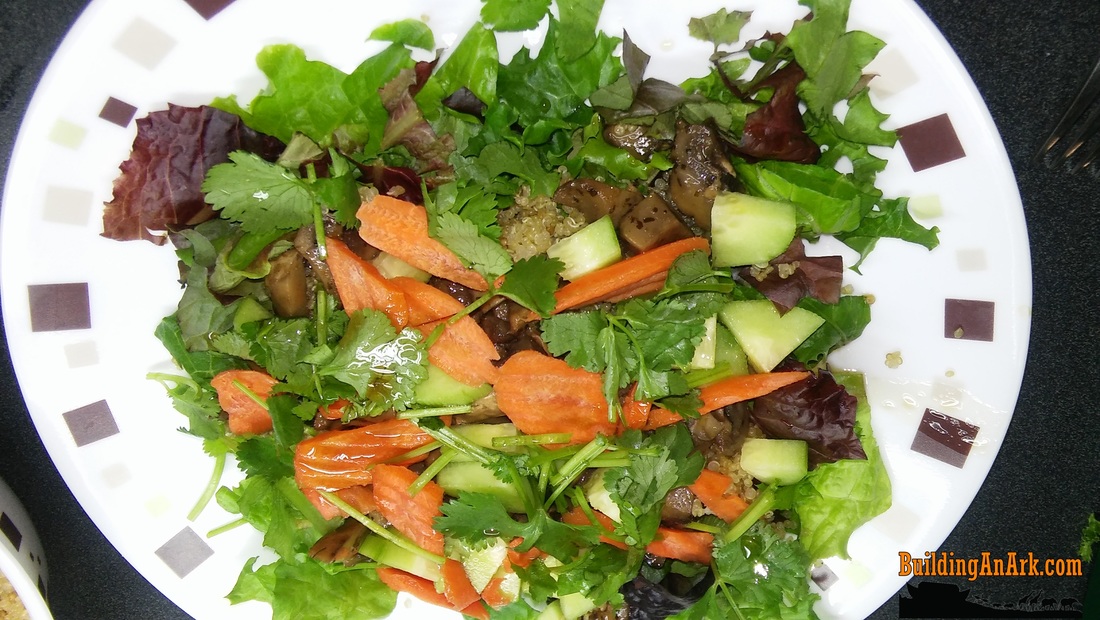I used to be nervous about trying hydroponics because there were piping, air tubes, pumps, and chemicals. Though I studied engineering in college and had a jack-of-all-trades dad, I have never felt comfortable taking on projects that involved hand tools and equipment that might need maintenance. But living in a townhouse with a gravel yard and an almost completely shaded deck has sent me searching for ways to garden indoors. So I bought a grow light system and a soil-less microgreens growing kit about a year ago, and well, now I'm hooked and ready to at least put my toe into hydroponic territory. Enter Kratky.
So this professor Kratky over in the paradise state of Hawaii developed a passive hydroponic set-up that allows the roots of the plants to follow their nutrient solution down as they soak it up. There is no need for air pumps, tubing, or circulation (Yay!!). The roots adapt to the situation differentiating into air roots (near top) and food/water roots (below). You try to give the plants a big enough solution reservoir to last the growing season. But if that isn't possible, just refill it, but not all the way, so the air roots don't drown.
I started a lettuce mix from seed in coco coir pellets. After a week and a half or two weeks, I transplanted them to their permanent home - a 10 gallon tote with net pots inserted into 2-inch drilled holes. The tote was filled with 7 gallons of nutrient solution using General Hydroponics Maxigrow formula. 7 gallons of water brought the nutrient solution high enough to just go over the bottom of the net cup. It turned out to be more than enough solution to support my plants for their 8 week growing cycle that included 4 weekly harvests starting at week 5 from seed. The tote was placed under my JumpStart grow light system that had 4 T5 bulbs in it. The lights were on 12 hours a day.
Below are pictures documenting the grow cycle.
So this professor Kratky over in the paradise state of Hawaii developed a passive hydroponic set-up that allows the roots of the plants to follow their nutrient solution down as they soak it up. There is no need for air pumps, tubing, or circulation (Yay!!). The roots adapt to the situation differentiating into air roots (near top) and food/water roots (below). You try to give the plants a big enough solution reservoir to last the growing season. But if that isn't possible, just refill it, but not all the way, so the air roots don't drown.
I started a lettuce mix from seed in coco coir pellets. After a week and a half or two weeks, I transplanted them to their permanent home - a 10 gallon tote with net pots inserted into 2-inch drilled holes. The tote was filled with 7 gallons of nutrient solution using General Hydroponics Maxigrow formula. 7 gallons of water brought the nutrient solution high enough to just go over the bottom of the net cup. It turned out to be more than enough solution to support my plants for their 8 week growing cycle that included 4 weekly harvests starting at week 5 from seed. The tote was placed under my JumpStart grow light system that had 4 T5 bulbs in it. The lights were on 12 hours a day.
Below are pictures documenting the grow cycle.
Since I had my growlights on a timer, this was by far the EASIEST gardening experiment I have done, and it was amazingly productive. I literally just had to keep reminding myself, "Don't do anything to the lettuce," until week 5 when I got to start harvesting the bounty. I forgot to weigh my harvest, but each week I got two large picnic bowls (Dollar Tree) piled high with lettuce 4 weeks straight. Those bowls easily fed me and my husband each 2 meal-size plates of salad a week.
Here is the wonderful weekly Asian-inspired salad I enjoyed.
Here is the wonderful weekly Asian-inspired salad I enjoyed.
Have you experimented with the Kratky hydroponic growing method yet? If so, what have you successfully grown?



 RSS Feed
RSS Feed